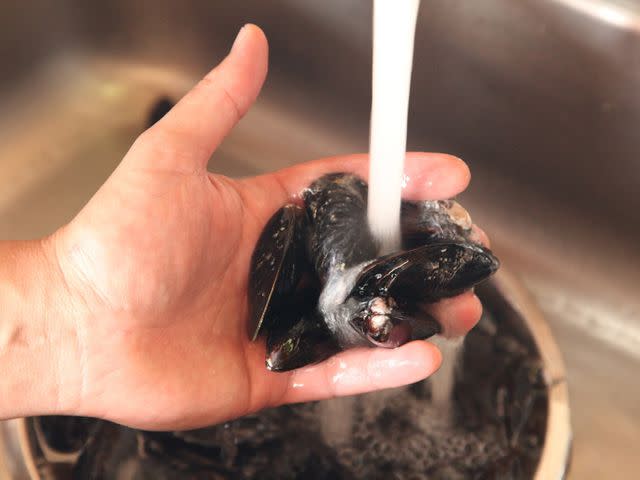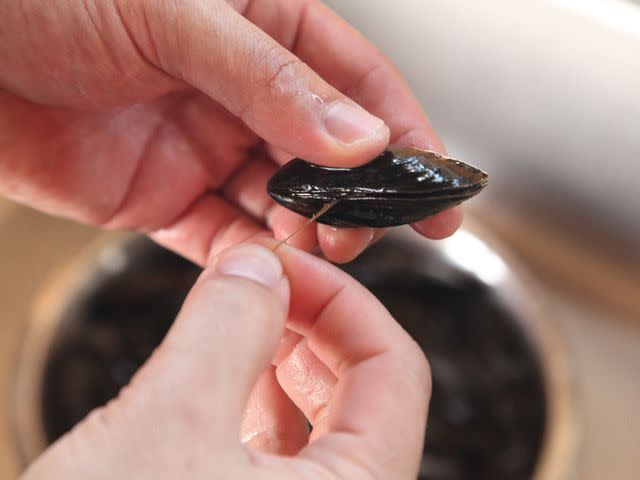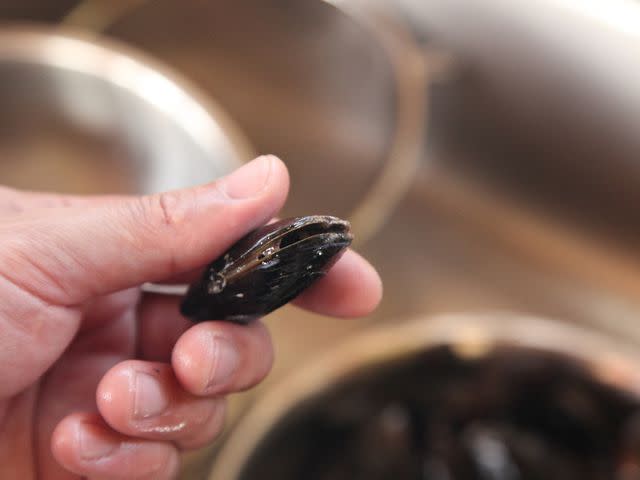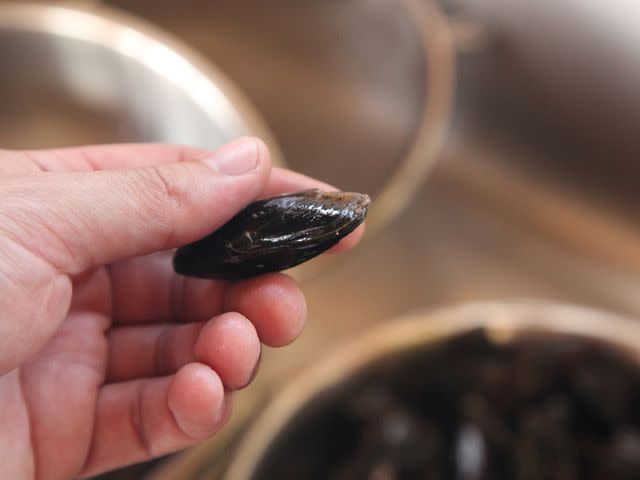How to Clean and Debeard Mussels
A short primer on mussel prep is all you need to get these delicious mollusks ready for any recipe.
Mussels have a reputation as being fiddly to clean or dangerous to eat. How many of you got freaked out about ordering mussels at restaurants after reading Kitchen Confidential?
The good news is that it's almost all untrue. Mussels are not only quick to prepare (think: fridge to table in about 15 minutes), they're also inexpensive, readily available, and deliciously elegant too. Here's how to get them ready for any recipe.
Shopping and Selection
Mussels, like most bivalves, are sold and cooked live. Why? It's because once their immune systems flake out after death, they tend to go off rather quickly, and it's very difficult to tell how long a dead mussel has been in that state. Mussels can live out of water for a few days, but they should be kept well-chilled and stored in a breathable environment. When you're at the fish market, make sure the mussels are kept over and under ice, and that their shells are glistening with moisture. Dry shells on the outside are a good indication of dead or dying mussels on the inside.
Though wild mussels are available in certain markets, the vast majority of mussels you'll find at the market are farm-raised. The good news is that unlike a lot of farm-raised fish, mussel farms are actually beneficial to the environment. According to the Seafood Choice Alliance, a healthy mussel will filter between 10 and 15 gallons of seawater per day, which improves coastal water health.
As an added bonus, most farm-raised mussels are grown on vertical rope farms, which means that they come to market quite clean—wild mussels can house a good amount of debris from the seabed or rock walls they grew on. On top of that, farm-raised mussels are held in tanks prior to packaging and shipping, which means that the purging step—soaking the mussels in clean water until they spit out impurities—has already been done for you.
Mussels come in both dark black and green varieties. Green mussels, native to Asia, are less common, but boast a better meat-to-shell ratio. For every pound of green mussels you buy, you can expect about 50% to be actual mussel meat. With black mussels, that figure can drop as low as 20%, depending on the season and exact method of farming. When buying mussels, I usually figure on around a half pound of shell-on mussels per person for a reasonable meal-sized portion.
I store my mussels in a bowl on the bottom shelf of the fridge with a zipper-lock bag filled with ice resting on top of them and a damp paper towel or kitchen towel on top. Stored this way, mussels will last for several days in the fridge.
How to Clean Mussels
Farm-raised mussels are thankfully quite clean to begin with and don't require the rigorous individual scrubbing-under-water that wild mussels do, but you'll still have to give them a quick once over.
Step 1: Rinse and Scrub as Necessary

Serious Eats / J. Kenji López-Alt
Place your mussels in a colander or bowl in the sink and run them under cold water. Rinse them to get rid of any debris or seaweed on their outer shells. If you feel any muddy spots, rub them off under the water, but you're very unlikely to with farm-raised mussels.
Step 2: Debeard
Mussels attach themselves to stable surfaces using thin, sticky membranes referred to as "beards." Again, most farm-raised mussels will come debearded already, but the odds are good you'll find a couple of stubborn beards left over.

Serious Eats / J. Kenji López-Alt
When you find one, grasp it between your thumb and forefinger and pull it downwards towards the hinged-end of the mussel shell. Pull firmly until it comes out and discard. If you have trouble gripping the beard with just your fingers, a dry paper towel can help.
Step 3: Check for Dead Ones
Mussels, clams, and other bivalves tend to gape open when they're dead, but not all gaping mussels are dead yet. Some of them are just relaxing (or perhaps stressing, if it's possible for bivalves to do such a thing).

Serious Eats / J. Kenji López-Alt
If you happen to spot any gaping mussels in your bowl, you can check for signs of life by picking them up and squeezing them a few times or knocking them with another mussel, clack clack clack. The mussel should slowly close itself back up. If it doesn't, you've got a dead one on your hands. Toss it in the trash and move on with your life.

Serious Eats / J. Kenji López-Alt
And that's it! Your mussels are ready to cook in any number of recipes.
Oh, and for the record, you can go ahead and ignore the conventional wisdom that a mussel that doesn't open after cooking shouldn't be eaten. As Daniel pointed out in his piece on Rhode Island clam chowder (and as corroborated by this Australian study), it is totally safe to crack open an unopened mussel to get at the meat inside.
November 2014
Read the original article on Serious Eats.

